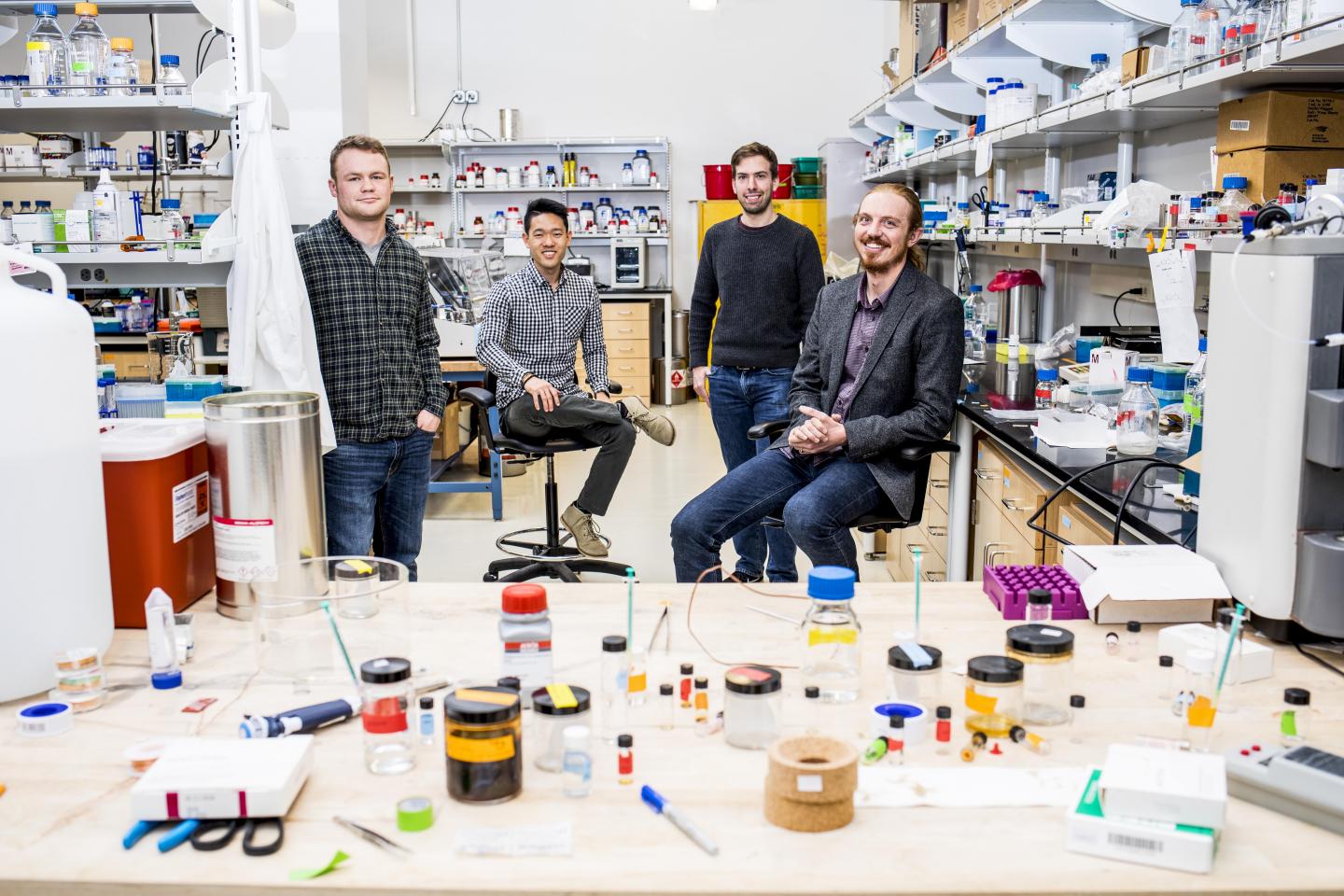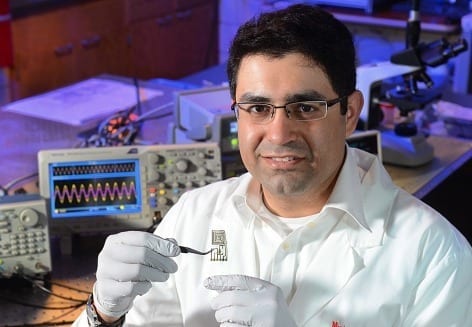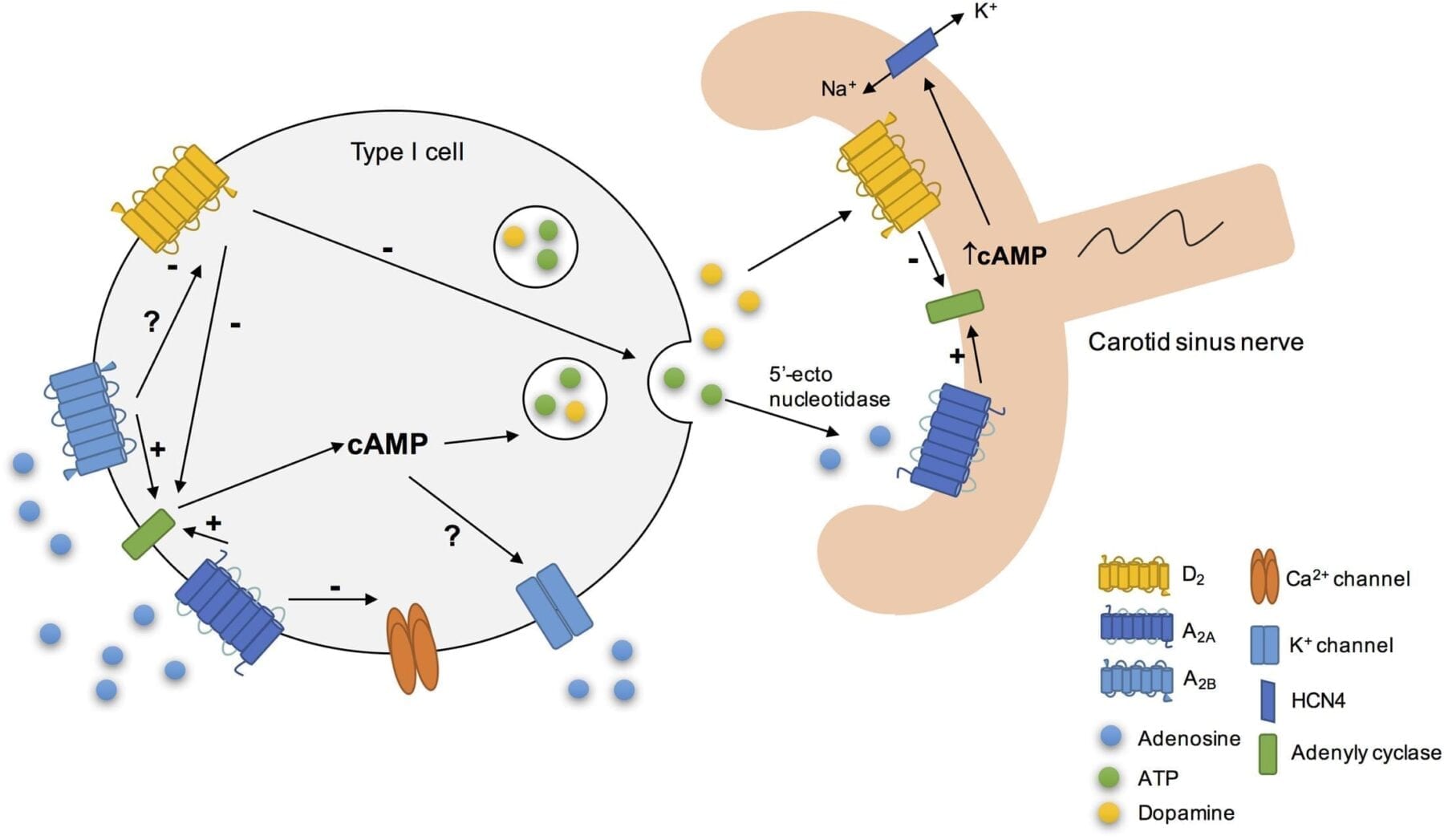
CREDIT
Dennis Wise/University of Washington
Researchers program biomaterials with ‘logic gates’ that release therapeutics in response to environmental triggers
Drug treatments can save lives, but sometimes they also carry unintended costs. After all, the same therapeutics that target pathogens and tumors can also harm healthy cells.
To reduce this collateral damage, scientists have long sought specificity in drug delivery systems: A package that can encase a therapeutic and will not disgorge its toxic cargo until it reaches the site of treatment — be it a tumor, a diseased organ or a site of infection.
In a paper published Jan. 15 in the journal Nature Chemistry, scientists at the University of Washington announced that they have built and tested a new biomaterial-based delivery system — known as a hydrogel — that will encase a desired cargo and dissolve to release its freight only when specific physiological conditions are met. These environmental cues could include the presence of an enzyme or even the acidic conditions that could be found in a tumor microenvironment. Critically, the triggers that cause dissolution of the hydrogel can be switched out easily in the synthesis process, allowing researchers to create many different packages that open up in response to unique combinations of environmental cues.
The team, led by UW chemical engineering assistant professor Cole DeForest, designed this hydrogel using the same principles behind simple mathematical logic statements — those at the heart of basic programming commands in computer science.
“The modular strategy that we have developed permits biomaterials to act like autonomous computers,” said DeForest, who is also a member of both the Institute for Stem Cell & Regenerative Medicine and the Molecular Engineering & Sciences Institute. “These hydrogels can be programmed to perform complex computations based on inputs provided exclusively by their local environment. Such advanced logic-based operations are unprecedented, and should yield exciting new directions in precision medicine.”
Hydrogels are more than 90 percent water; the remainder consists of networks of biochemical polymers. Hydrogels can be engineered to ferry a variety of therapeutics, such as pharmaceutical products, special cells or signaling molecules, for purposes including drug delivery or even 3-D tissue engineering for transplantation into patients.
The key to the team’s innovation lies in the way the hydrogels were synthesized. When researchers assembled the polymer network that comprises the biomaterial, they incorporated chemical “cross-link” gates that are designed to open and release the hydrogel’s contents in response to user-specified cues — much like how the locked gates in a fence will only “respond,” or open with a specific set of keys.
“Our ‘gates’ consist of chemical chains that could — for example — be cleaved only by an enzyme that is uniquely produced in certain tissues of the body; or be opened only in response to a particular temperature or specific acidic conditions,” said DeForest. “With this specificity, we realized we could more generally design hydrogels with gates that would open if only certain chemical conditions — or logic statements — were met.”
DeForest and his team built these hydrogel gates using simple principles of Boolean logic, which centers on inputs to simple binary commands: “YES,” “AND” or “OR.” The researchers started out by building three types of hydrogels, each with a different “YES” gate. They would only open and release their test cargo — fluorescent dye molecules — in response to their specific environmental cue.
One of the “YES” gates they designed is a short peptide — one of the constituent parts of cellular proteins. This peptide gate can be cleaved by an enzyme known as matrix metalloprotease (MMP). If MMP is absent, the gate and hydrogel remain intact. But if the enzyme is present in a cell or tissue, then MMP will slice the peptide gate and the hydrogel will burst open, releasing its contents. A second “YES” gate that the researchers designed consists of a synthetic chemical group called an ortho-nitrobenzyl ester (oNB). This chemical gate is immune to MMP, but it can be cleaved by light. A third “YES” gate contains a disulfide bond, which breaks upon reaction with chemical reductants but not in response to light or MMP. A hydrogel containing one of these types of “YES” gates is essentially “programmed” to respond to its physiological surroundings using the Boolean logic of its cross-link gate. A hydrogel with an oNB gate, for example, will open and release its contents in the presence of light, but not any of the other cues like the MMP enzyme or a chemically reductive environment.
They also created and tested hydrogels with multiple types of “YES” gates, essentially creating hydrogels with gates that would open and release their cargo in response to multiple combinations of environmental cues, not just one cue: light AND enzyme; reductant OR light; enzyme AND light AND reductant. Hydrogels with these more complex types of gates could still carry cargo, either fluorescent dyes or living cells, and release it only in response to the particular gate’s unique combination of environmental triggers.
The team even tested how well a hydrogel with an “AND” gate — reductant and the enzyme MMP — could ferry the chemotherapy drug doxorubicin. The doxorubicin-containing hydrogel was mixed with cultures of tumor-derived HeLa cells, which doxorubicin should kill easily. But the hydrogel remained intact, and the HeLa cancer cells remained alive unless the researchers added both triggers for the “AND” gate: MMP and reductant. One cue alone was insufficient to cause HeLa cell demise.
DeForest and his team are building on these results to pursue even more complex gates. After all, specificity is the goal, both in medicine and tissue engineering.
“Our hope is that, by applying Boolean principles to hydrogel design, we can create a class of truly smart therapeutic delivery systems and tissue engineering tools with ever-greater specificity for organs, tissues or even disease states such as tumor environments,” said DeForest. “Using these design principles, the only limits could be our imagination.”
Learn more: Biomaterials with ‘logic gates’ release therapeutics in response to environmental triggers
The Latest on: Biomaterials with logic gates
[google_news title=”” keyword=”biomaterials with logic gates” num_posts=”10″ blurb_length=”0″ show_thumb=”left”]- EECE.5750 Field Programmable Gate Arrays Logic Design Techniques (Formerly 16.575)on April 8, 2024 at 5:59 pm
Advanced logic design techniques using field programmable gate arrays (FPGAs), programmable logic devices, programmable array logic devices, and other forms of reconfigurable logic. Architectural ...
- Biomaterials Chemistry Groupon March 28, 2024 at 11:13 pm
The Biomaterials Group is one of the RSC's many Interest Groups. The Interest Groups are member driven groups which exist to benefit RSC members, and the wider chemical science community, in line with ...
- Molecular logic and computingon January 20, 2024 at 9:04 pm
It is not easy to pass the output from one molecular logic gate to serve as an input to the next because the inputs and outputs differ in nature in many instances. It must be stressed, however ...
- Patching Together Logic Gateson August 25, 2023 at 2:20 am
For those just getting their start in digital logic, this teaching tool allows different logic gates to be wired together with patch cables. While [David] first thought to use 74-series logic ...
- Gate Logic Security Newson October 6, 2022 at 4:40 am
Gate Logic Security, an elite, full-service company specialising in physical perimeter security, gate automation, and access controls, invites municipalities and outdoor venues to schedule an ...
- Best free Logic Gate simulator software for Windows PCon April 20, 2021 at 9:28 am
Logic Gates are among the important components of a circuit. All the logical operations required to perform a particular task in an electronic circuit are carried by these logic gates. If you are ...
- Systems: Sources and functions of components - Eduqason July 25, 2020 at 9:11 pm
Logic gates can be combined in many ways. To work out what the final output will be, the truth tables must be used to track the outputs and inputs along the combination of logic gates, like ...
- Logic Gates Informationon February 11, 2018 at 6:42 am
Logic gates are circuits with electronically controlled switches that combine digital signals according to Boolean algebra. In binary math, bits have only two possible values: 0 (off, false) and 1 (on ...
- Field-Programmable Gate Arrays (FPGA) Informationon February 8, 2018 at 12:45 pm
Field-programmable gate arrays (FPGAs) are integrated circuits (ICs) that contain an array of logic cells surrounded by programmable I/O blocks. FPGAs contain as many as tens of thousands of logic ...
- Make Logic Gates Out Of (Almost) Anythingon January 2, 2017 at 11:11 pm
Logic gates are the bricks and mortar of digital electronics, implementing a logical operation on one or more binary inputs to produce a single output. These operations are what make all ...
via Google News and Bing News










